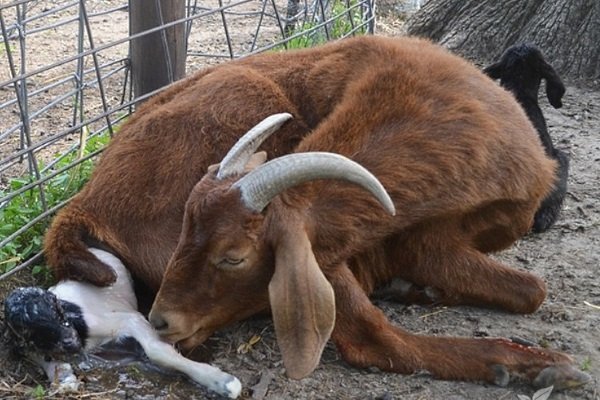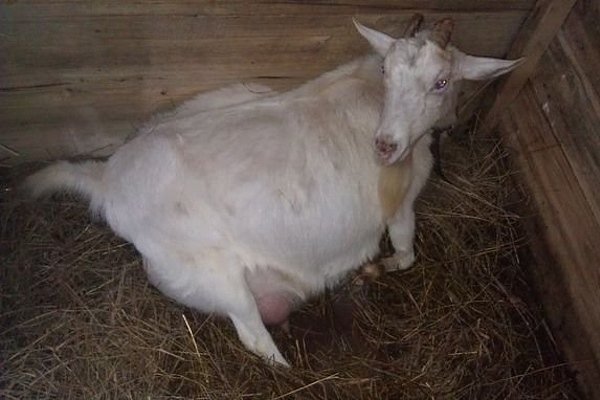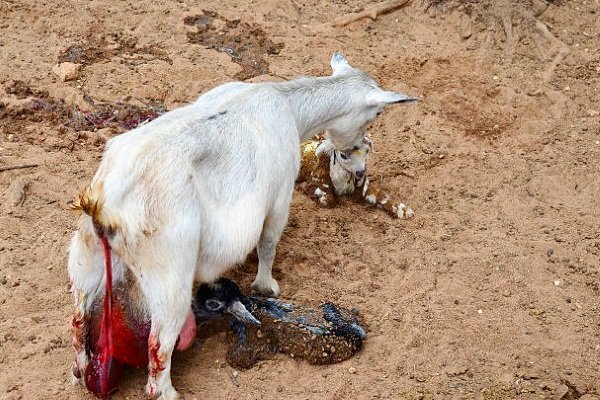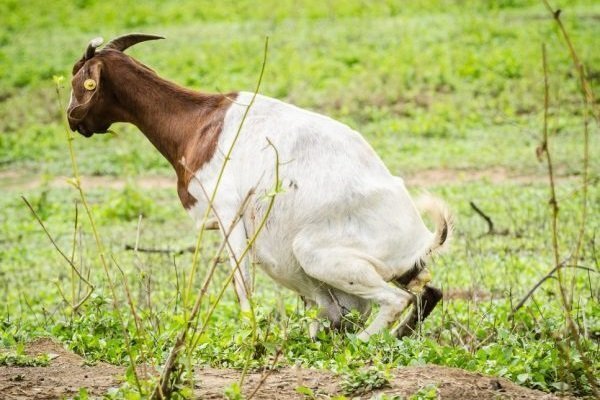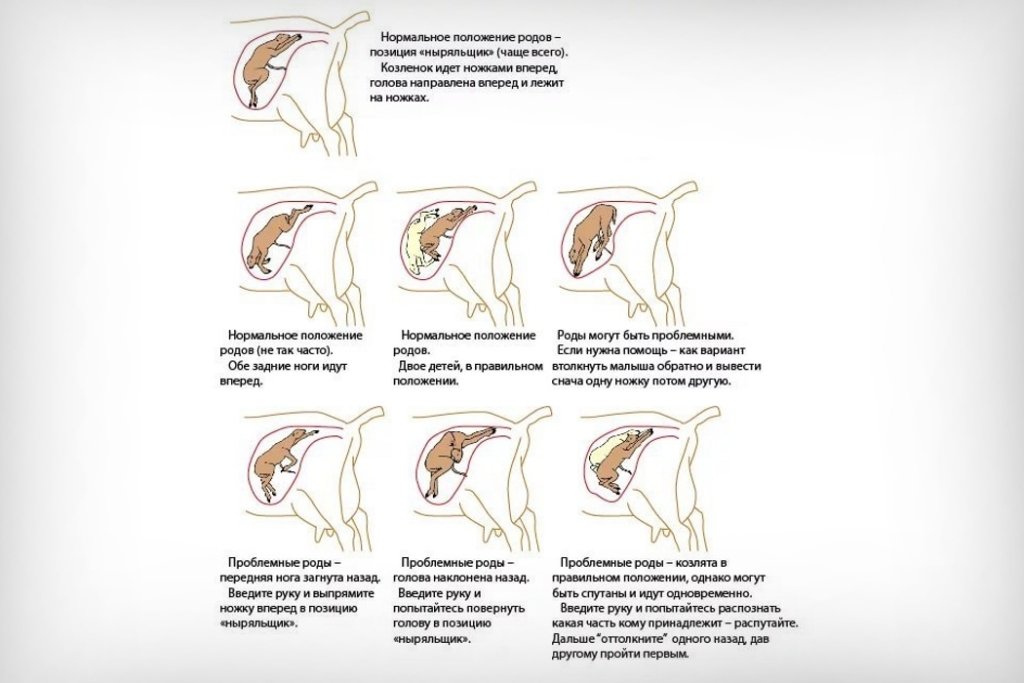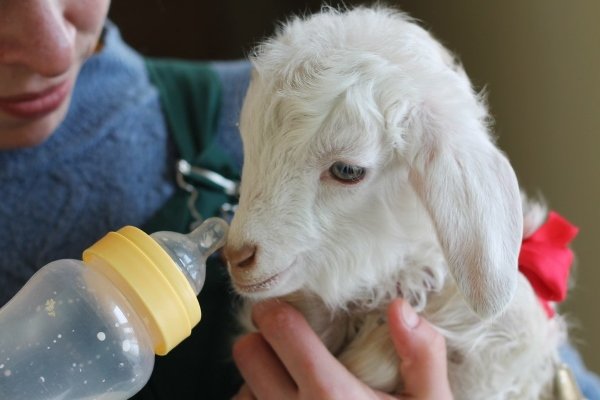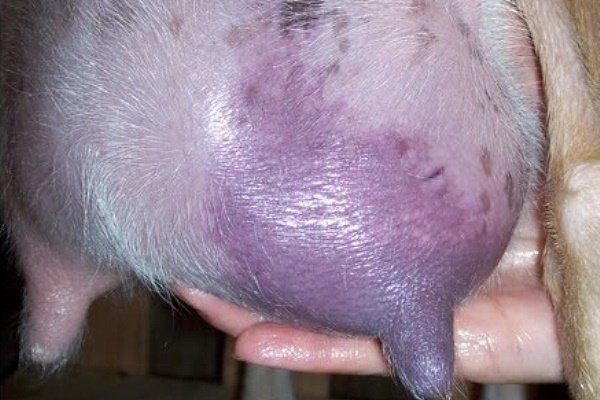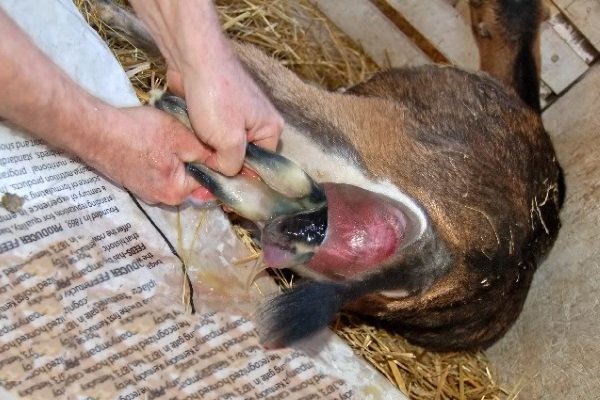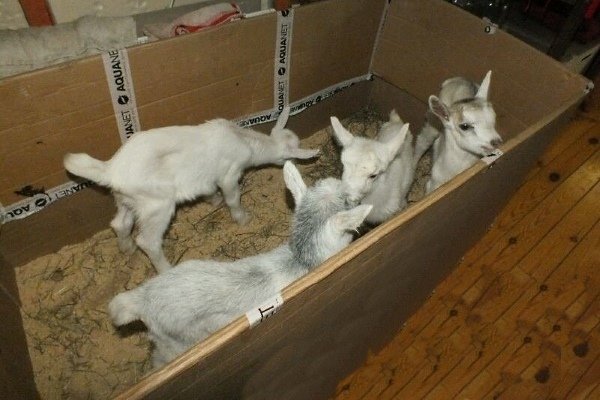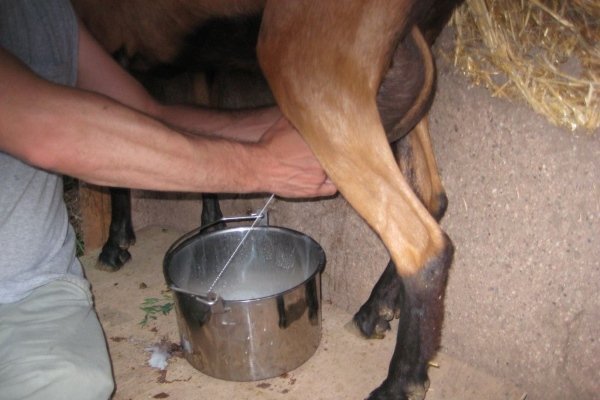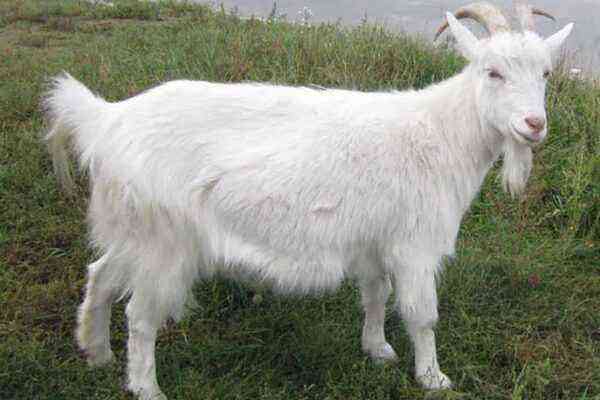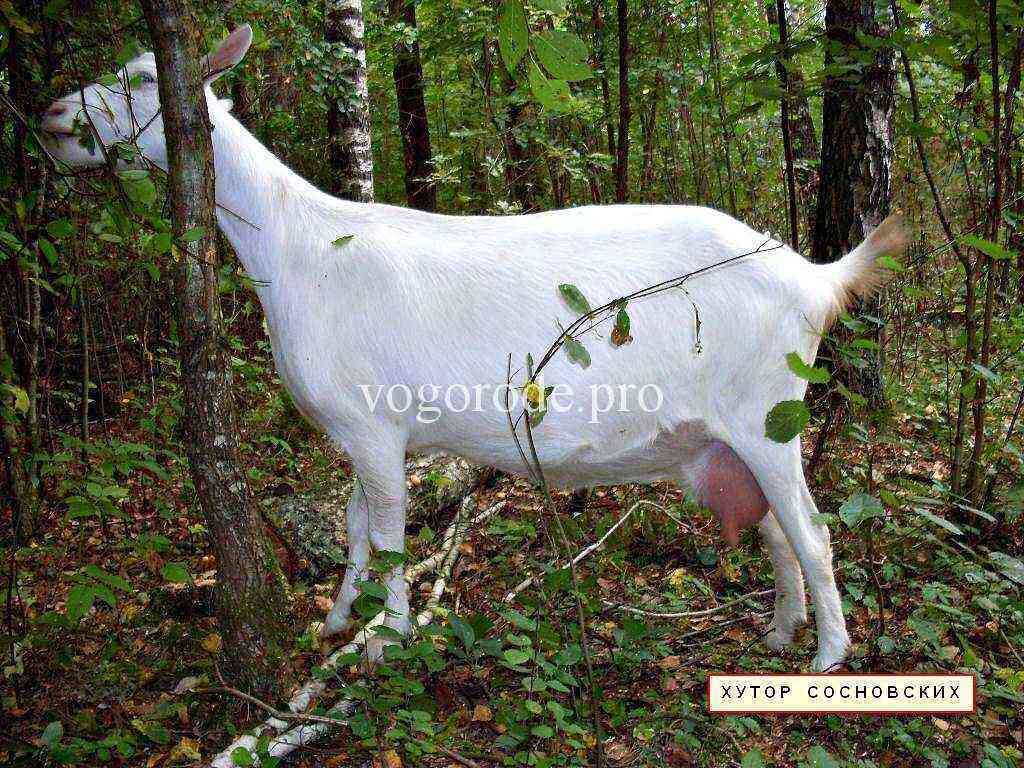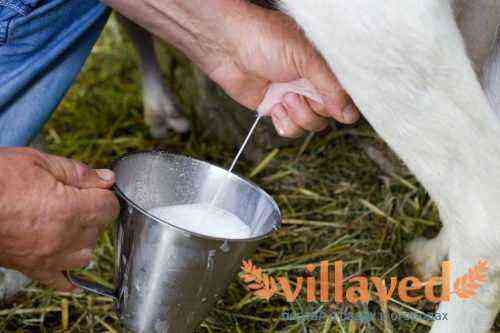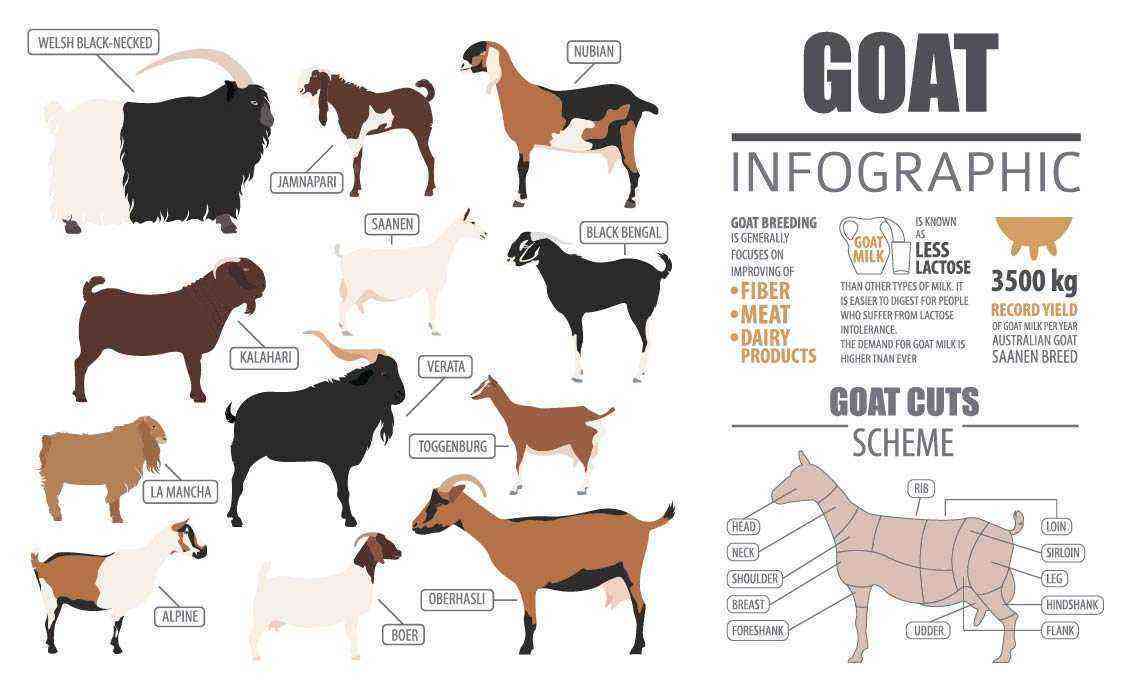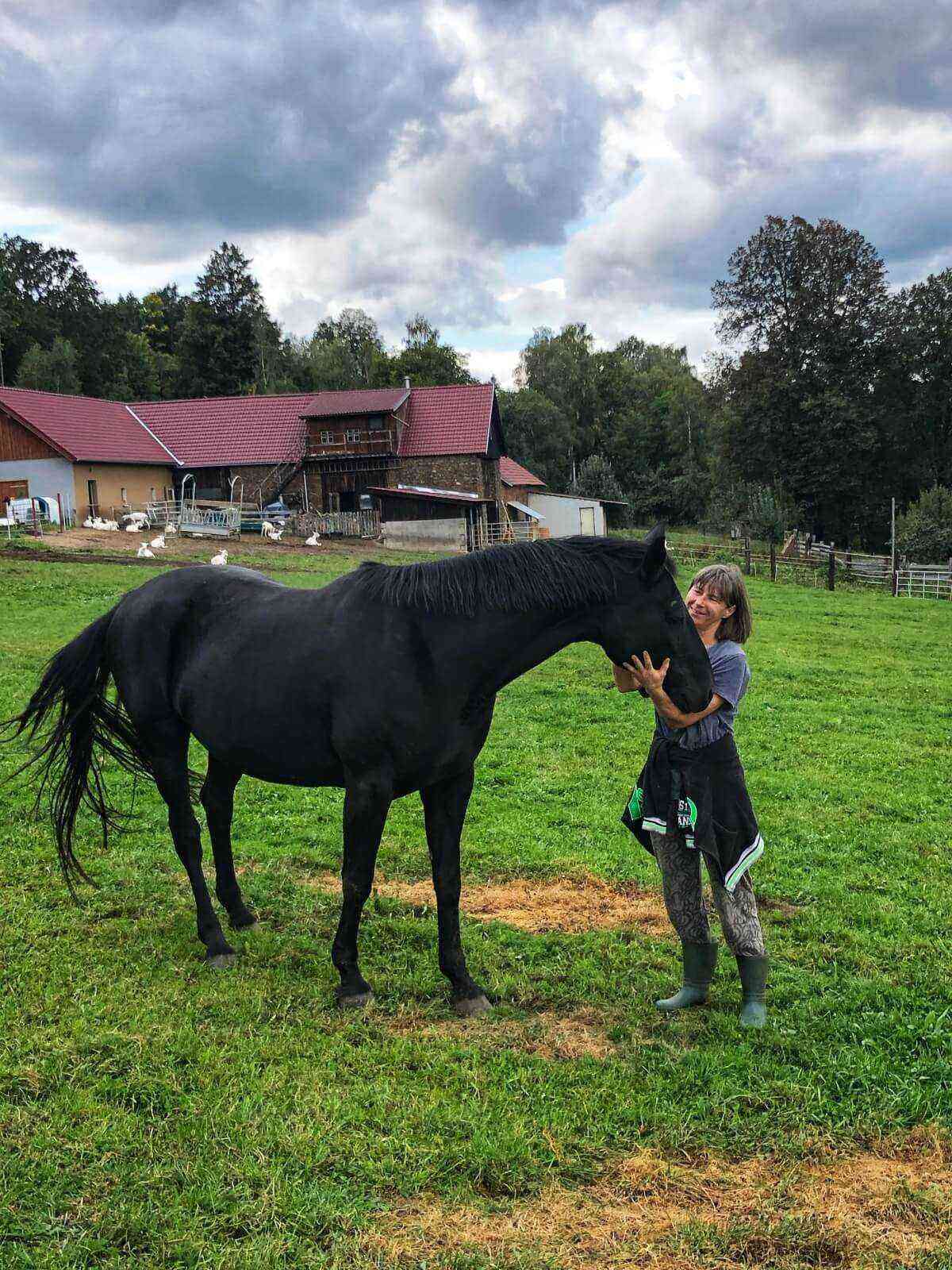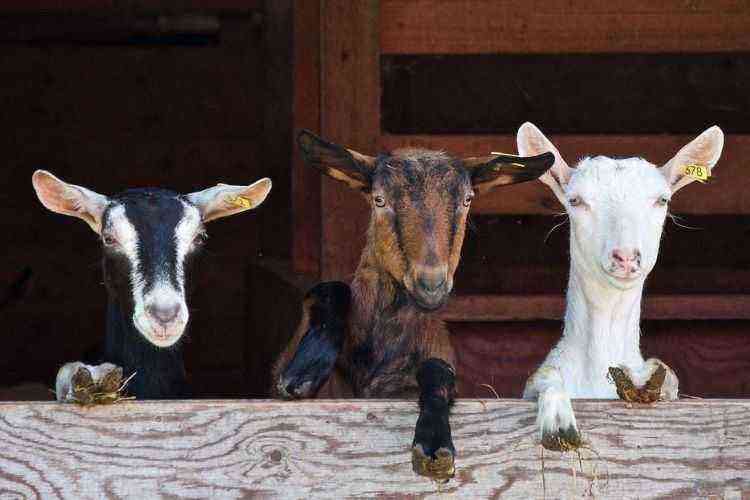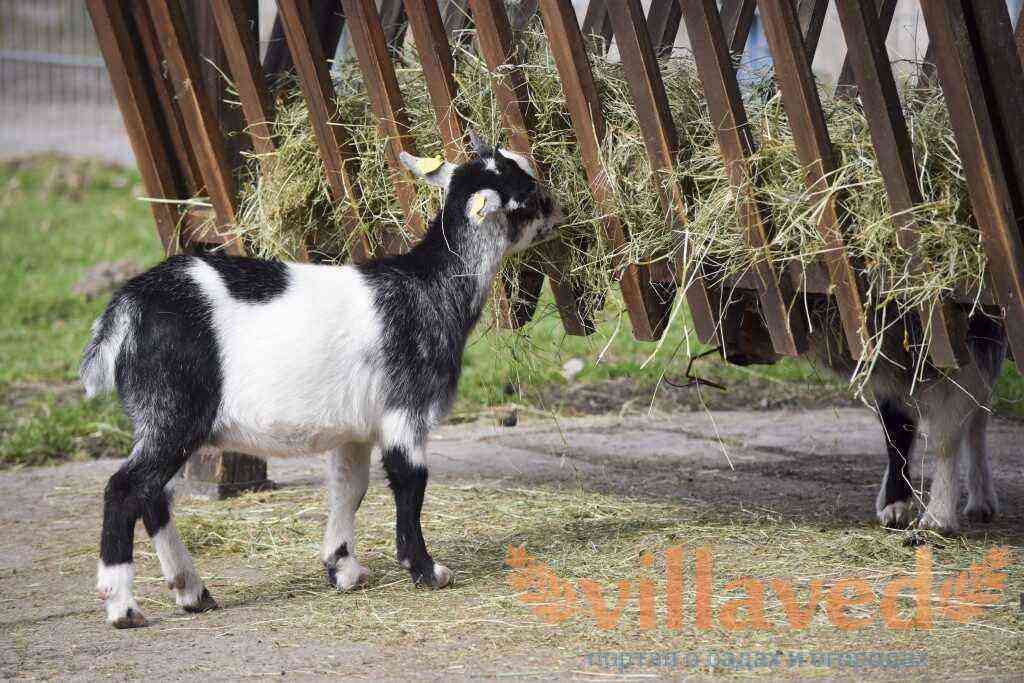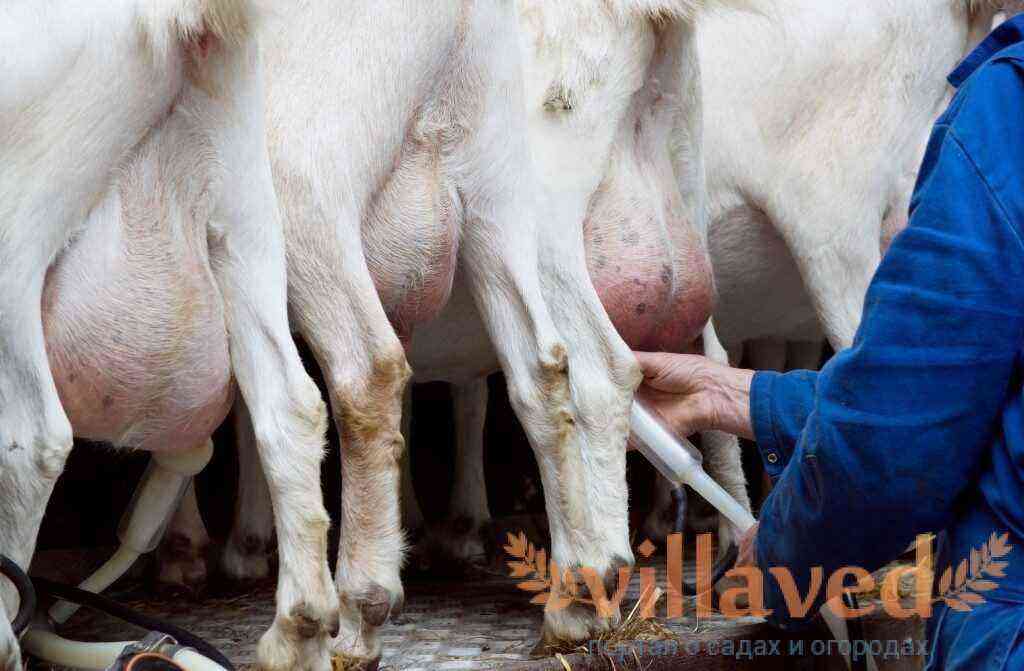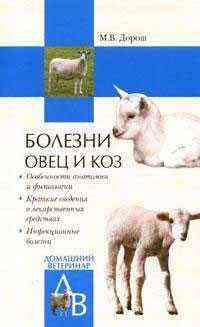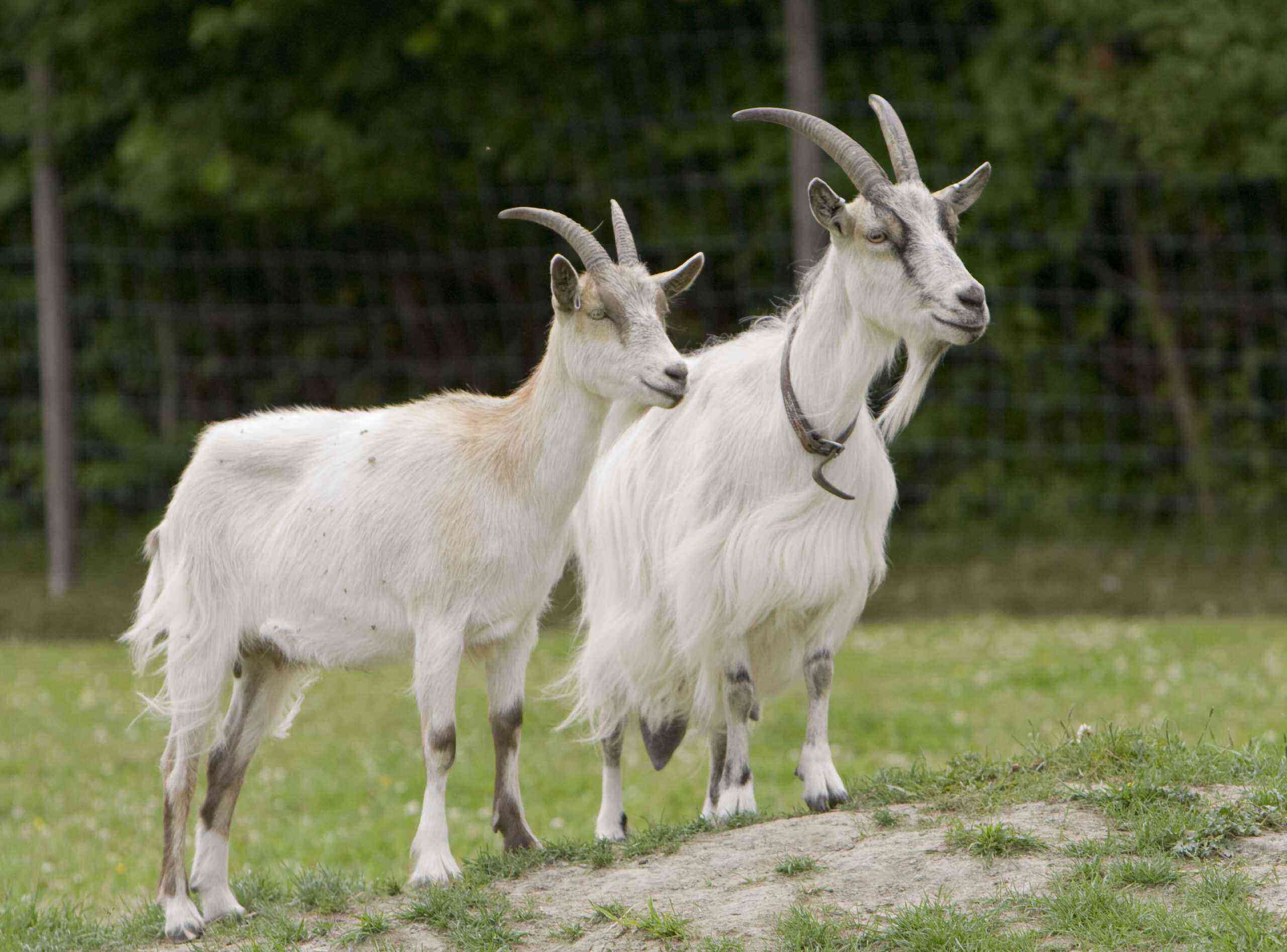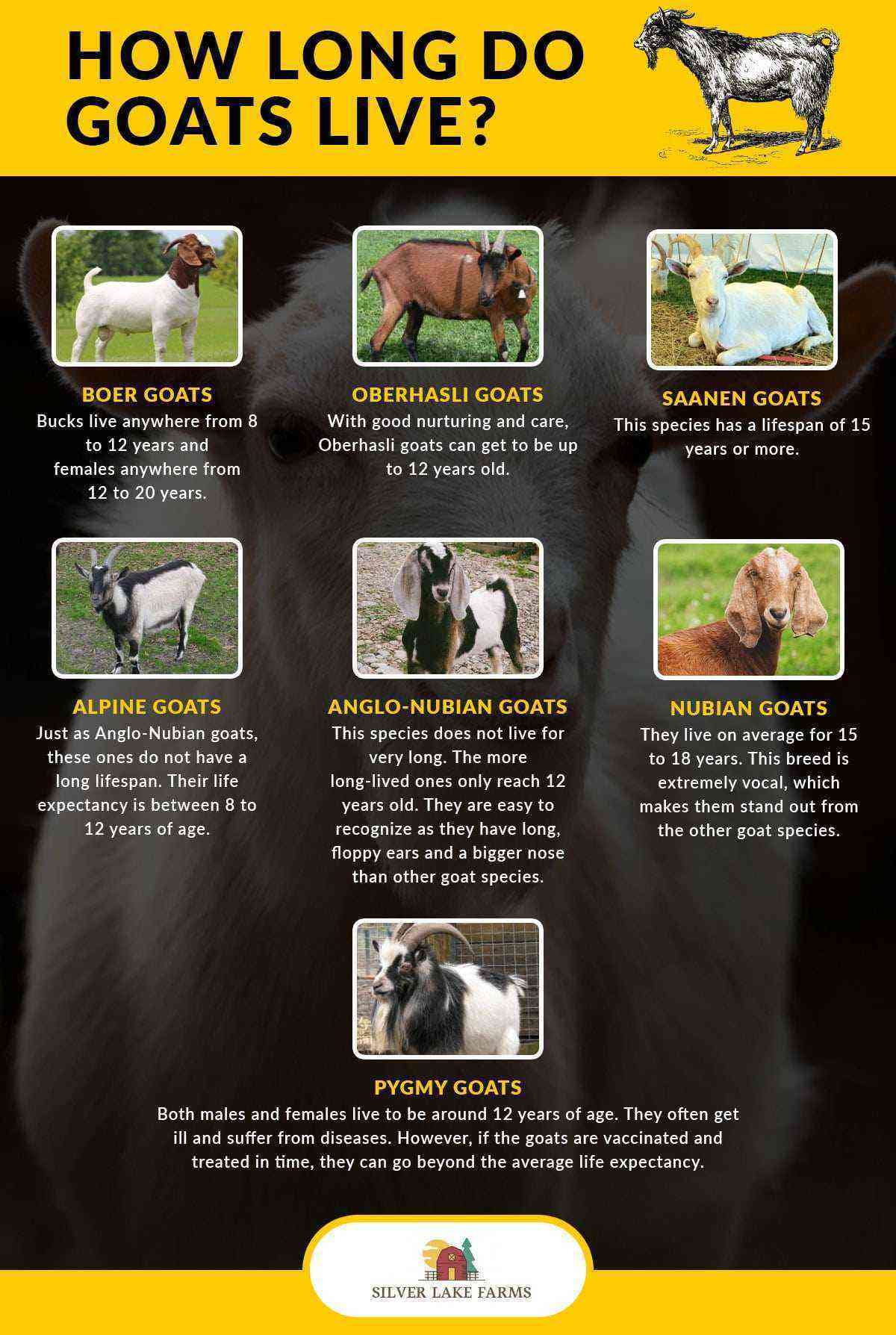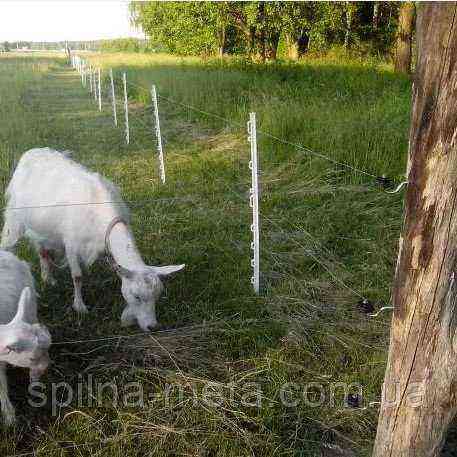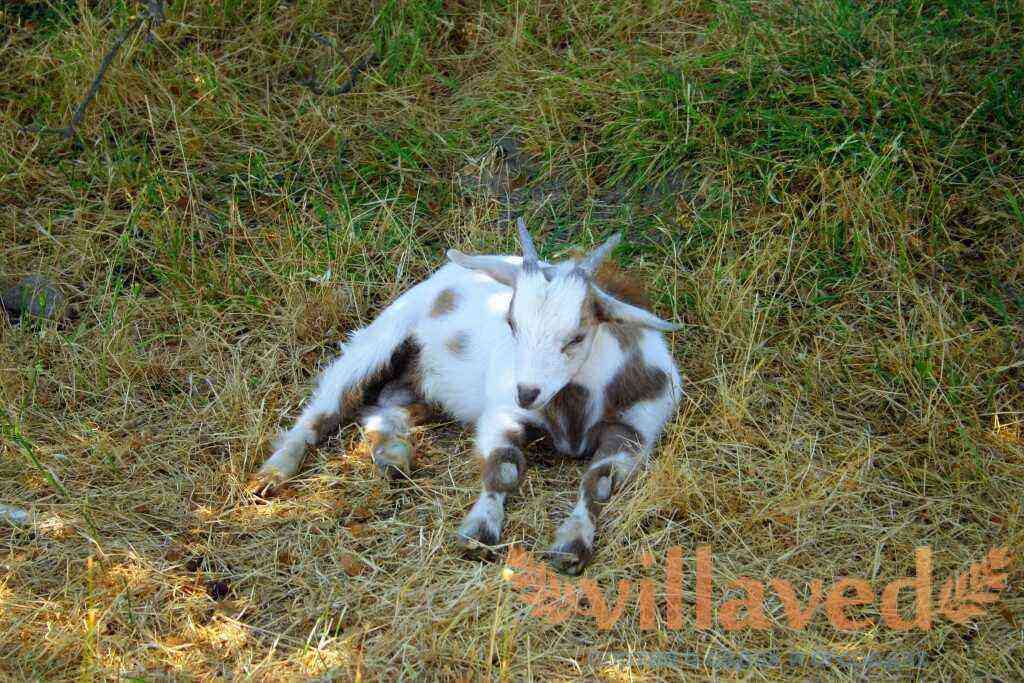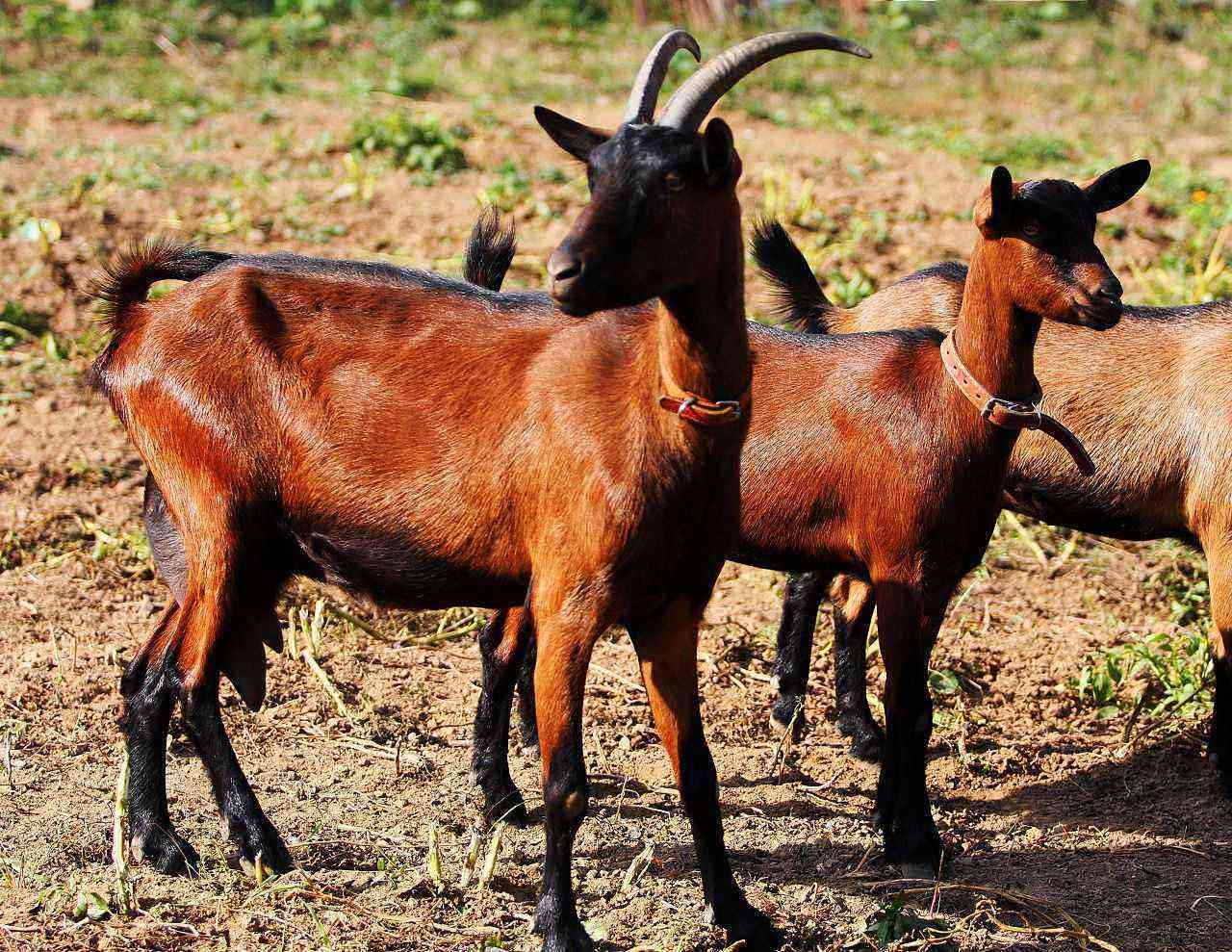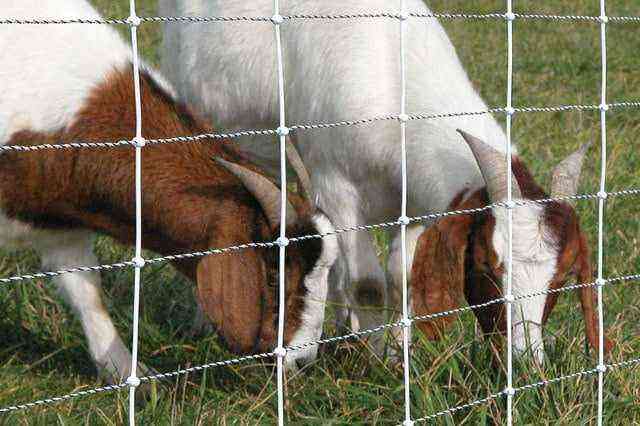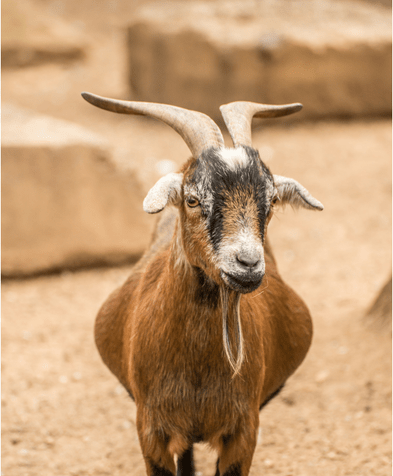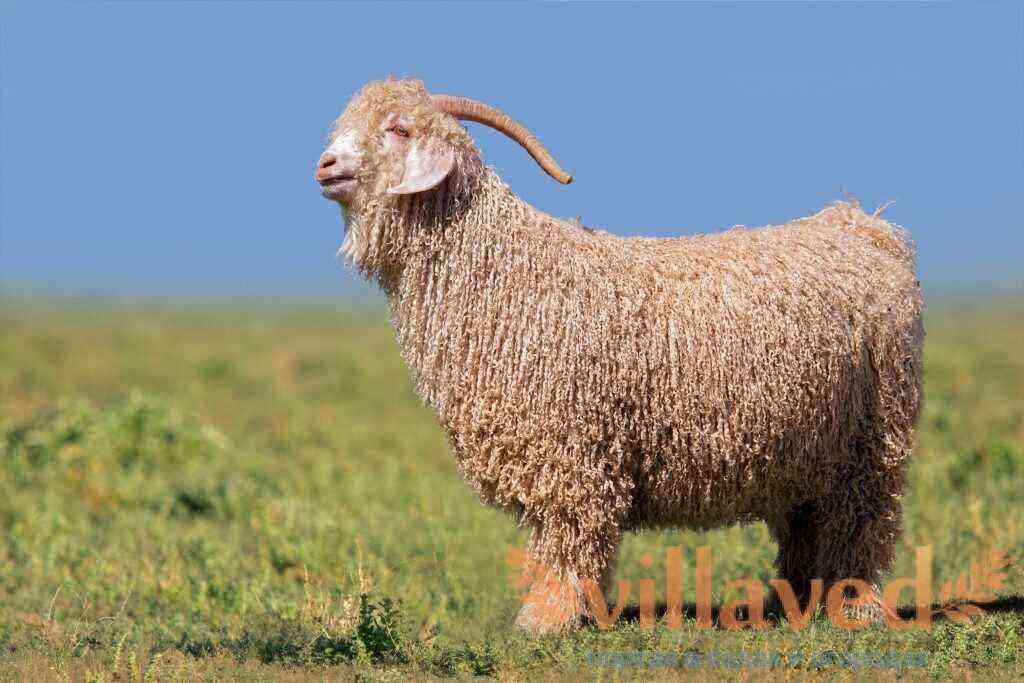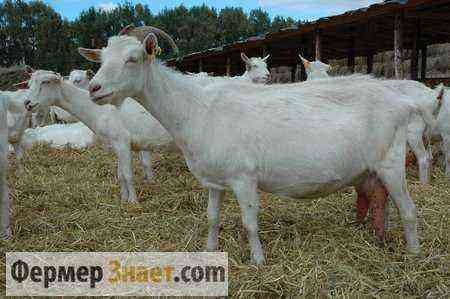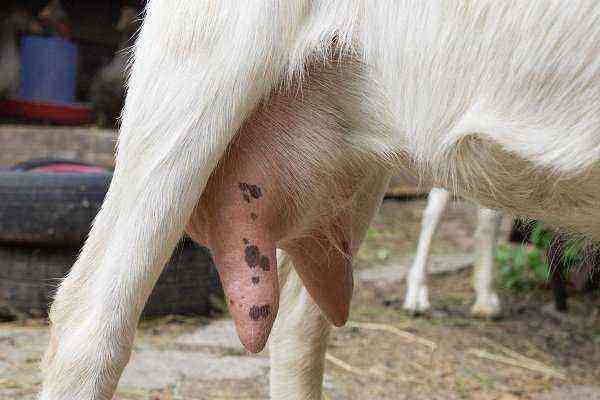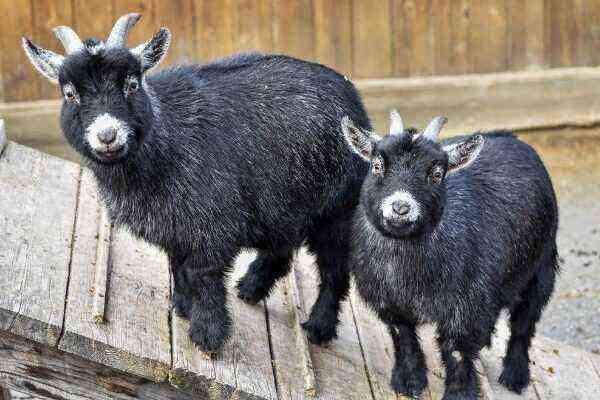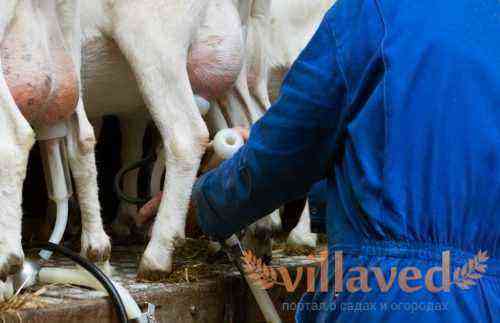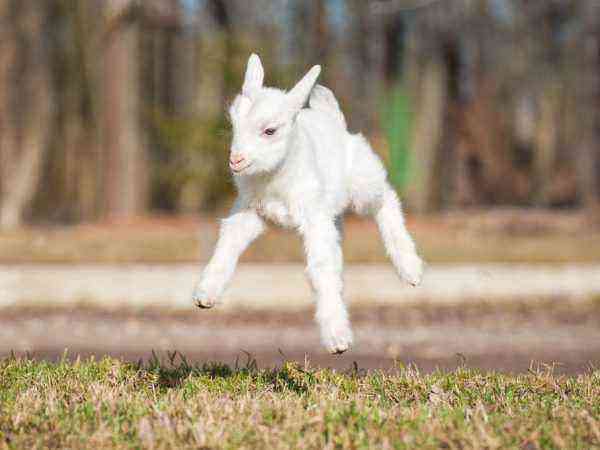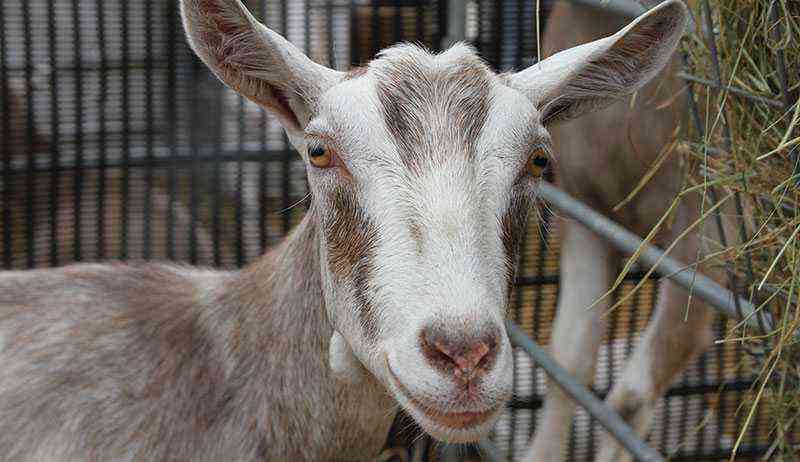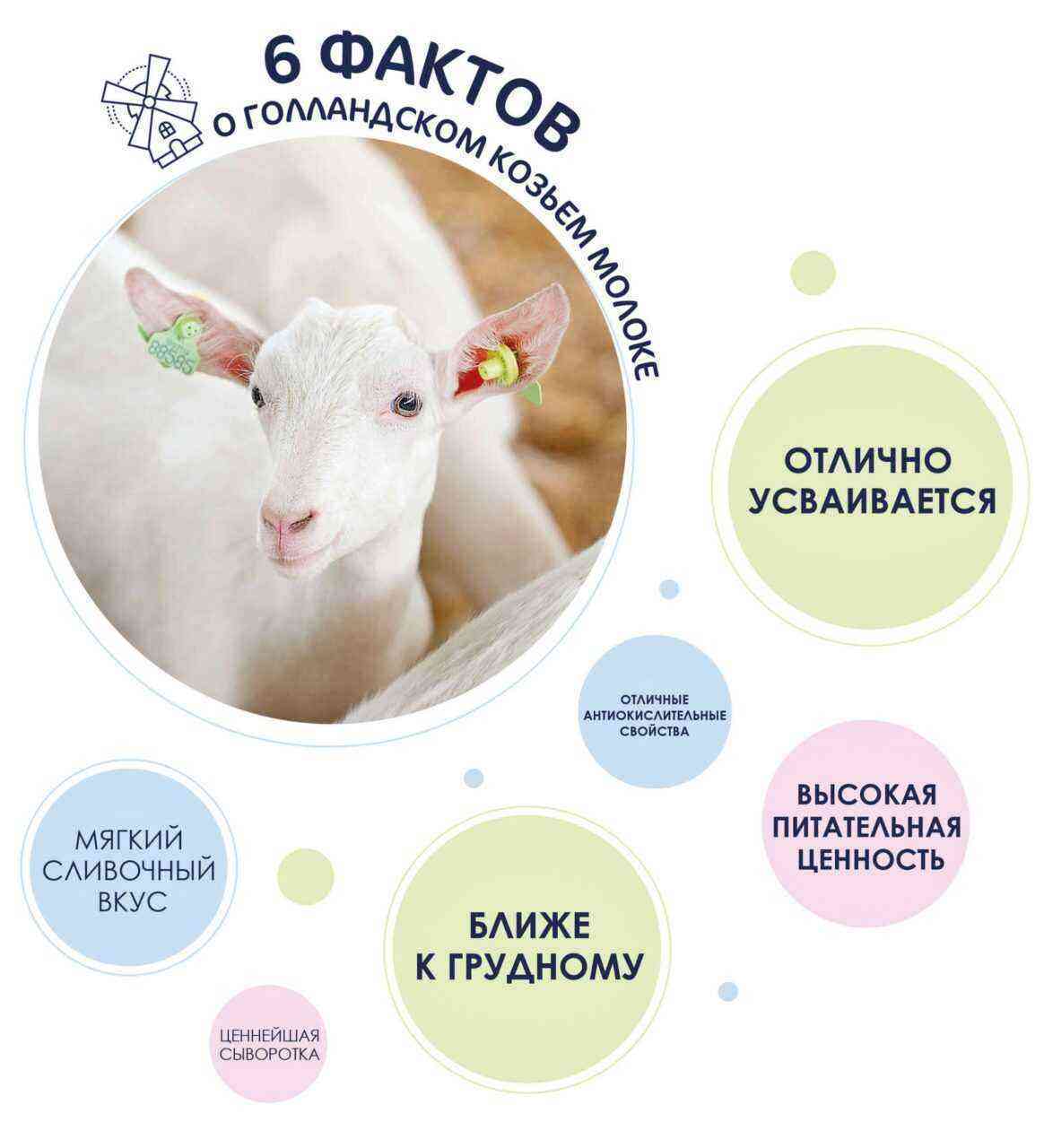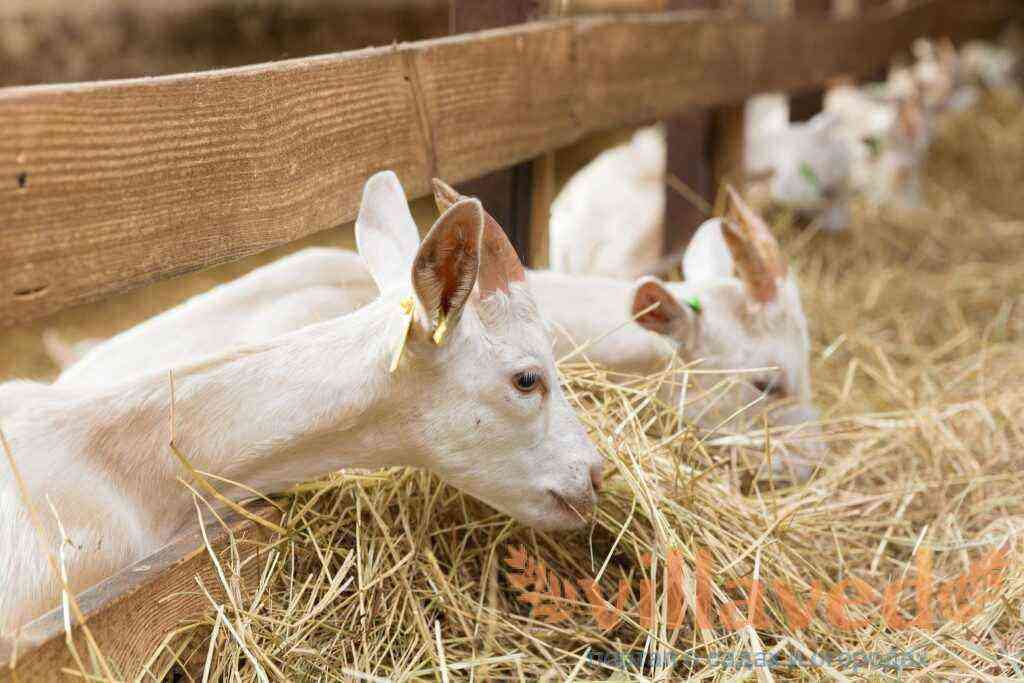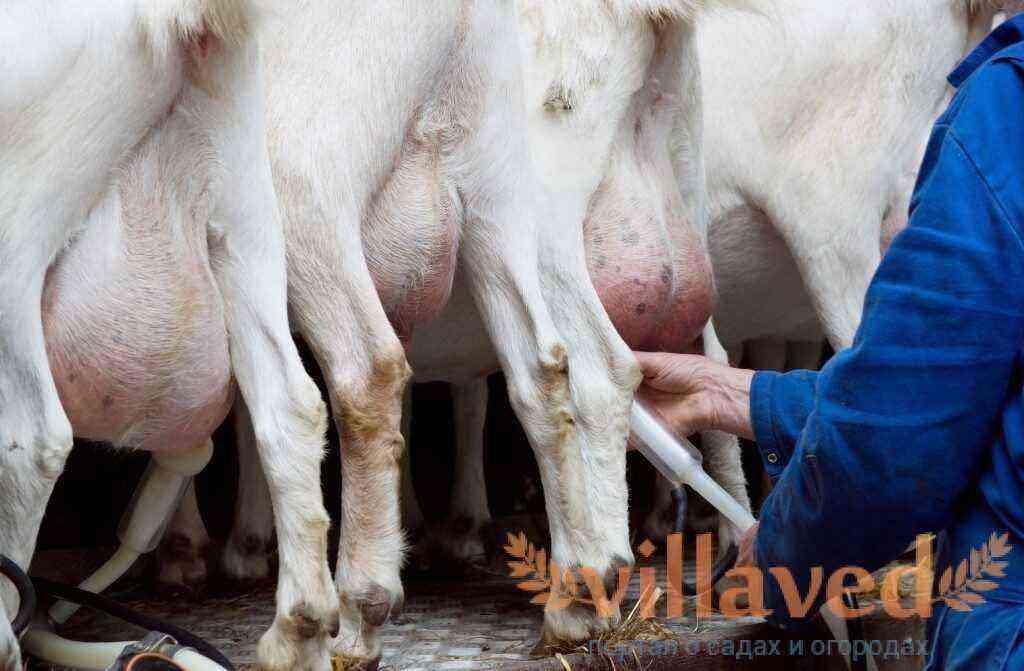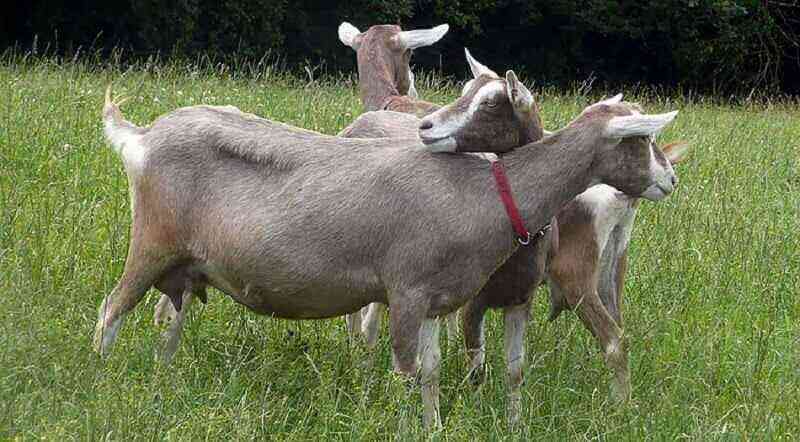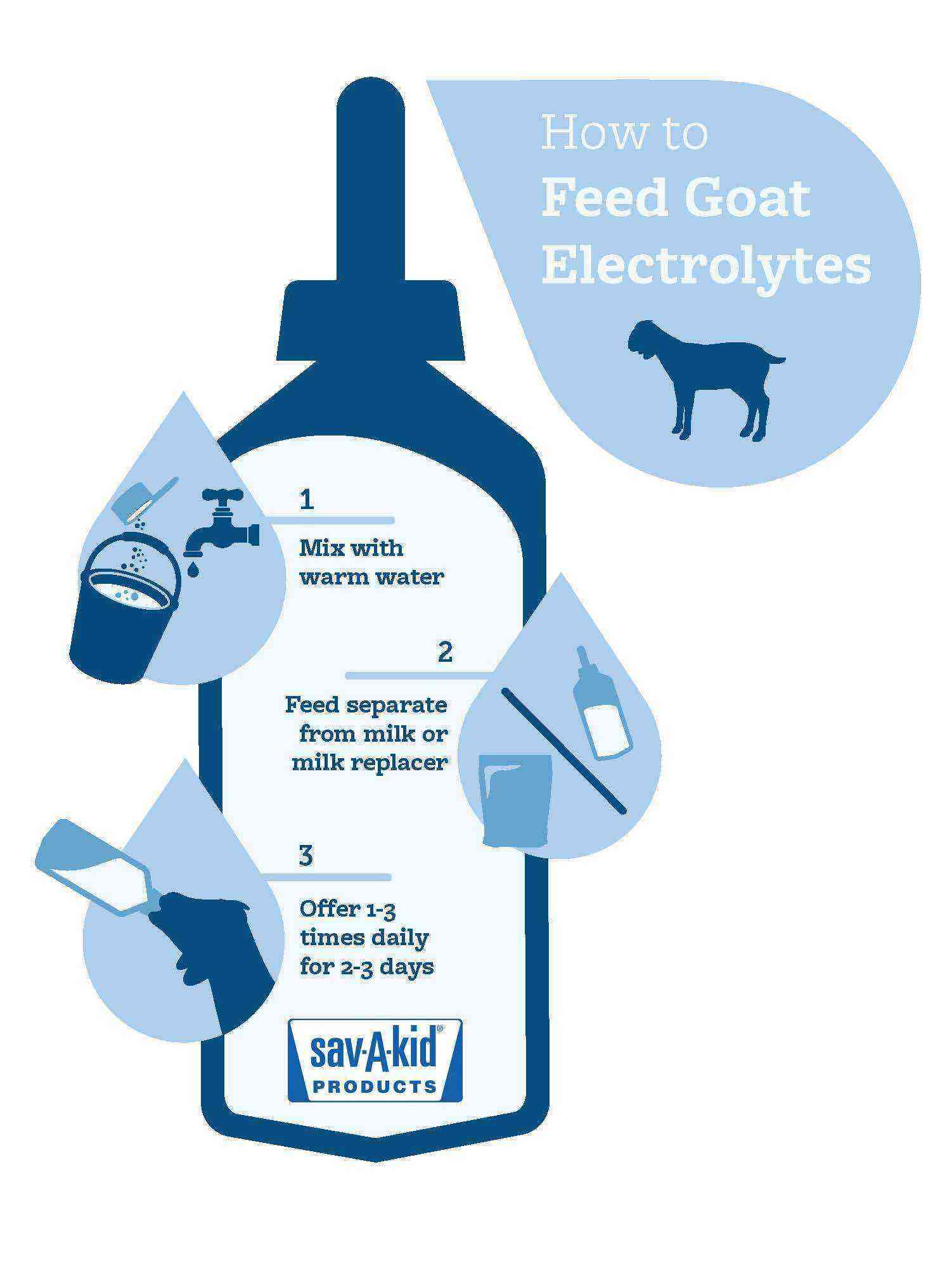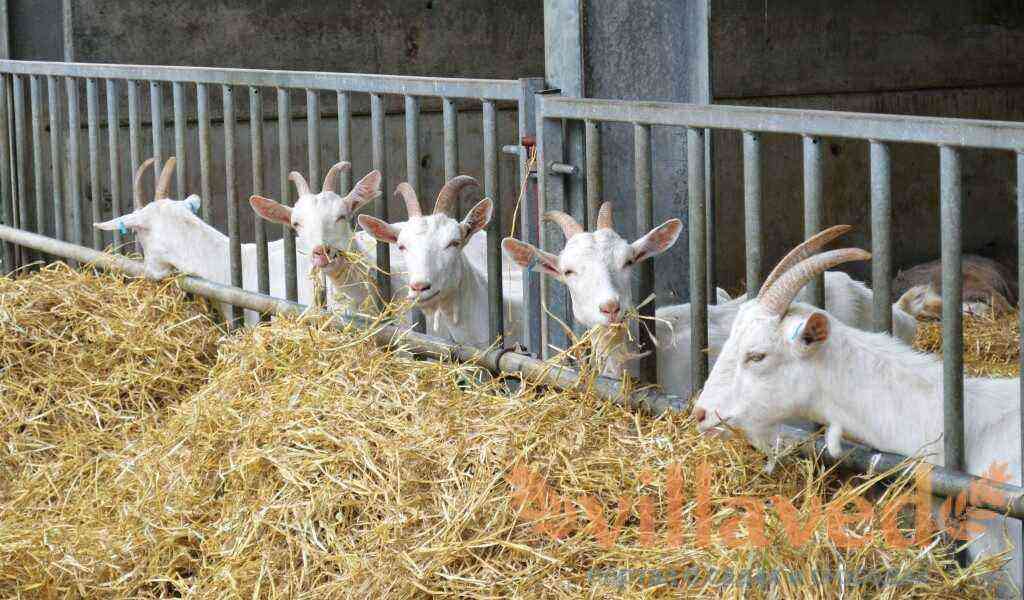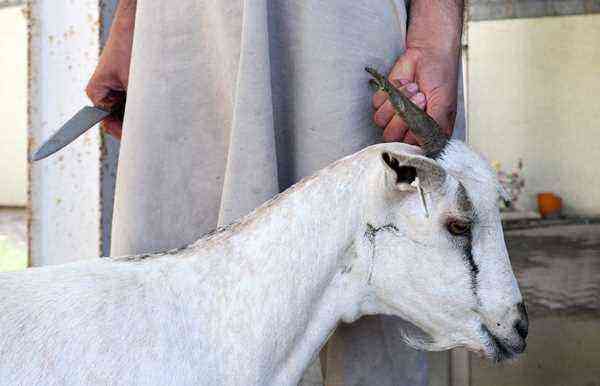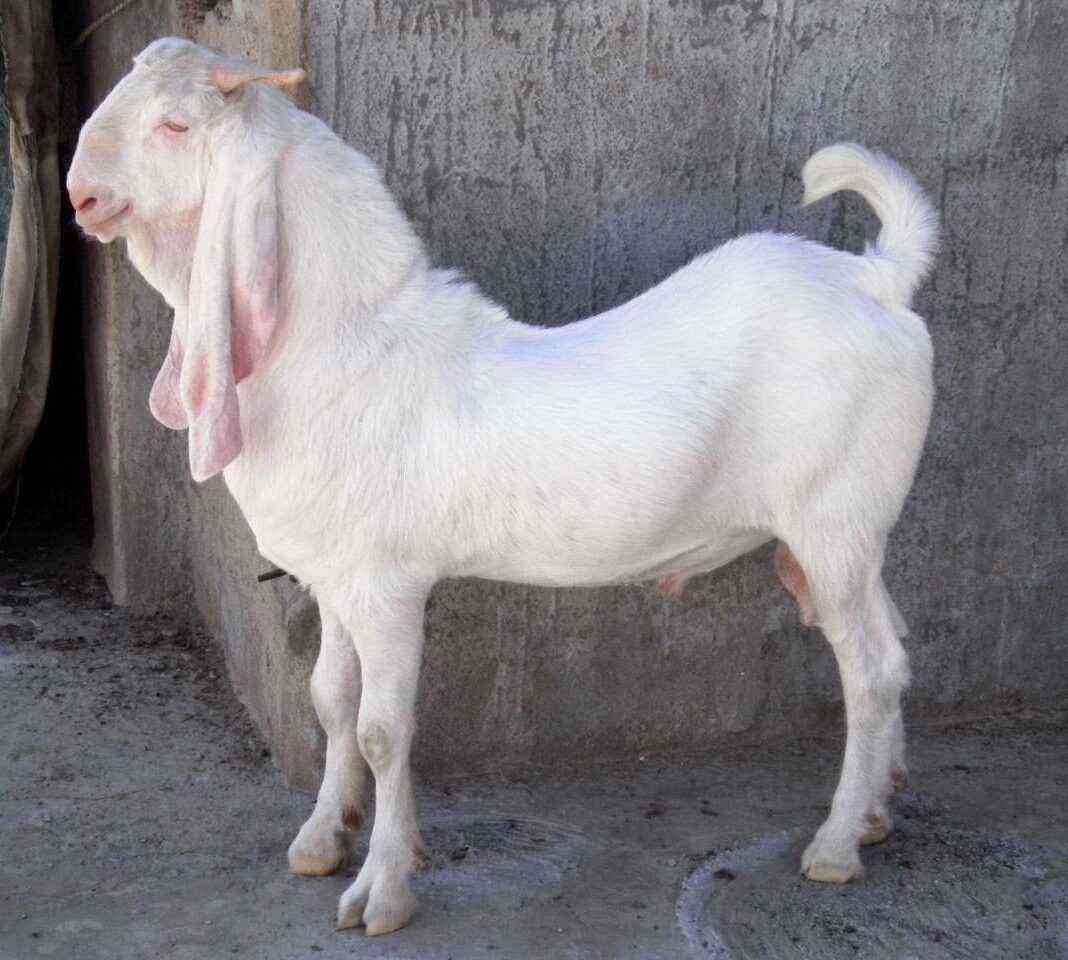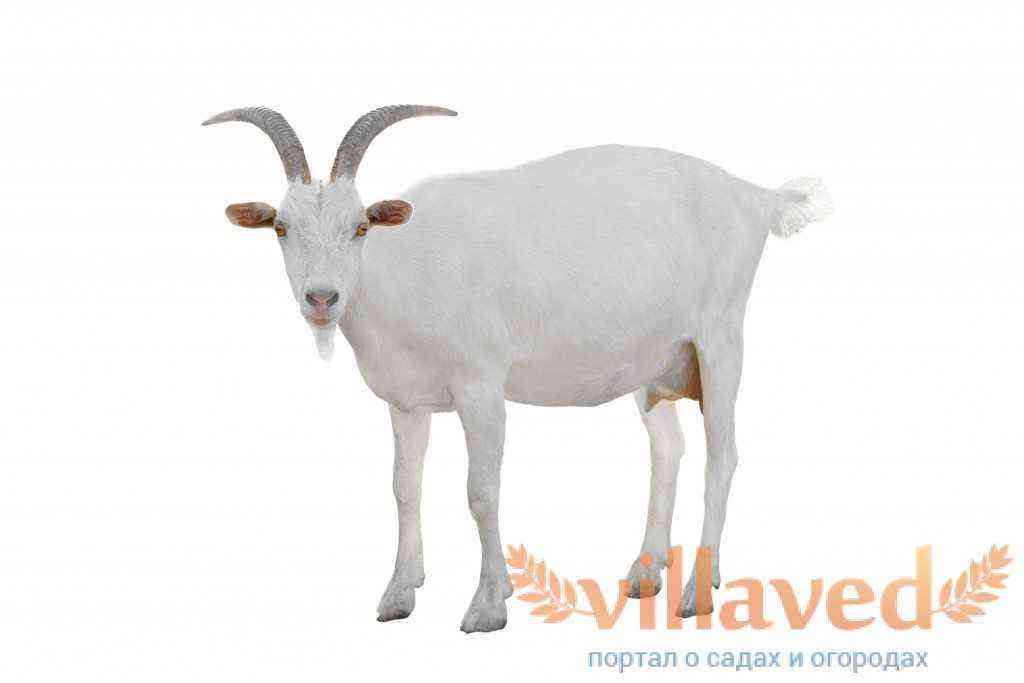In most cases, lambing in a goat passes without complications, but if they occur, the owner must be able to help both the woman in labor and the fetus in time. What should be considered during labor, and what problems are possible we will consider in the article below.
Launching a goat before childbirth
Launching a goat is a reduction in the number of milkings in order to stop lactation before giving birth. This is a necessary measure that allows the animal to recover and gain strength before lambing and a new lactation period. Starting from the second month of pregnancy, the fetus actively grows, taking the necessary nutrients from the mother’s body.
If lactation is not stopped, colostrum cannot physically accumulate in the udder, and it will turn out to be unprepared for feeding offspring. Milk production after childbirth is completely dependent on the timely launch of the goat.
Carry out the launch, taking into account the rules:
- start a fattened goat no later than 1 month before the expected date of lambing;
- start the launch of an animal of lean physique 2-3 months in advance;
- you can not abruptly stop milking a goat, gradually reduce the number of milkings per day, and then per week;
- do not empty the udder completely – it is enough to milk 75% of the milk;
- with a single milk yield of less than 250 ml of milk, milking is completely curtailed.
If the amount of milk does not decrease, review the diet of the animal, and reduce the amount of succulent feed, salt, which increase lactation.
Lambing dates
The duration of pregnancy in a goat is from 147 to 152 days. Most often, lambing occurs between October and March.
Signs of childbirth in a goat
Before giving birth, the goat behaves differently, changes are noticeable in appearance. Signs of imminent lambing include:
- Swelling of the udder and fever of the teats. In primiparous females, the udder swells about a month before the offspring appears, in those who give birth again – before childbirth.
- Swelling of the external genitalia. There is a slight swelling.
- Divergence of the pelvic bones. The sacral ligaments soften and depressions form at the caudal base.
- Abundant discharge. Their color should not be white or with a yellow tint. Normal discharge is clear and may contain blood streaks.
- nervous behavior. A goat can bleat, find no place for itself, often look at its stomach, and refuse to eat.
Females in whom lambing occurs for the first time are especially worried. When near other individuals before lambing, the goat may show aggression towards them.
In the video below, see the main signs of the onset of labor in a goat:
Preparing for lambing
As the expected date of birth approaches, preparatory measures are required. These include:
- 12-15 weeks before lambing, carry out antiparasitic treatment;
- 4-8 weeks in advance, apply measures to stop lactation and make changes to the animal’s diet;
- disinfect, whitewash and prepare the room in 6 weeks;
- transfer the goat to a prepared separate pen 4-5 weeks in advance;
- a week before giving birth, watch the female especially carefully, checking for prenatal signs.
Provide the shed with dry and clean bedding. The female herself will move the straw so that it is convenient for her during lambing. Do not disturb the goat once again, do not raise your voice to it, and even more so do not use force. Now she needs peace and quiet, so leave the animal alone for a while.
It will not be superfluous to prepare a veterinary first aid kit, which should contain the following components:
- syringes;
- gloves;
- oxytocin (to stimulate labor);
- belief;
- soap;
- iodine, etc.
After a week from the cessation of lactation, remove the dietary restrictions on this matter. Now the goat needs good nutrition to provide the fetus with the necessary substances and a set of strength before lambing. Do not forget about the vitamin-mineral complex and the constant availability of clean water in the paddock.
Lambing duration
The duration of lambing depends on the number of previous births, the number of kids born and the duration of the prenatal period:
- The first lambing in a young individual lasts up to 1,5 hours.
- Goats that give birth again go through this process in 40-45 minutes.
- With multiple pregnancies, the difference between the birth of kids can be 10-30 minutes. Complications can take time.
How is the birth?
The birth of goats involves the passage of 3 periods:
- Preparatory. It is characterized by the installation of regular contractions. During this period, uterine contractions rush amniotic fluid to the neck, which gradually opens under pressure. With the full opening of the cervix at the peak of the contraction, the fetal bladder breaks, and the amniotic fluid comes out.
The preparatory period is especially painful, so the animal shows obvious restlessness. Its duration is from 4 to 6 hours. - Removal of the fetus. When the cervix is open, the goat begins to push. With their help, the fetus moves through the birth canal. When a baby goat appears at the genital slit – the eruption of the fetus – attempts reach a maximum level. With the next push, the baby is born. The duration of the process is from 10 to 40 minutes.
At the birth of two kids, the first comes out in the head position, when the head is pressed against the outstretched front legs, and the second is in the breech presentation. The umbilical cord normally breaks itself when the newborn or woman in labor moves.
Usually, the goat spends this entire period lying on its right side. Attempts cause tension of the whole body of the animal, and in this position the sacrum is more mobile, which facilitates the passage of the fetus. - Sequential. In 20-60 minutes after the birth of the kid, the uterine cavity is cleared under the action of contractions. The placenta is torn away from the walls of the uterus and exits along with the afterbirth and the remnants of the amniotic fluid. The aftermath of each fetus during multiple pregnancy comes out separately.
If you do not remove the afterbirth, then the goat will eat it. This is not dangerous for her, but can cause gastrointestinal upset.
How lambing occurs in a goat can be seen in the following video:
Placenta check
When leaving the placenta, check it for integrity. The presence of holes in its structure indicates that its part has grown to the wall of the uterus and only a veterinarian can remove it. If this is not done, then decomposition processes in the uterus will begin, which will lead to suppuration, bleeding and other complications.
Complications at lambing
It is not always easy for a goat to give birth, it happens that they are complicated by expected or unforeseen reasons. There are three main causes of complications in lambing:
- Weak labor activity.
- Narrow pelvis.
- Incorrect position of the fetus in the womb.
Knowing the reasons, a person in most cases is able to help the animal on his own.
Didn’t come out last
After lambing, a situation may arise when the rejection of the placenta by the uterus is delayed for more than 6 hours, and the placenta is not able to come out. The bubble continues to hang behind, and the state of the goat raises concerns.
It is strictly forbidden to cut off a hanging bubble or pull it, trying to pull it out.
In this case, you need to help the animal like this:
- To stimulate uterine contractions and limit the development of pathogenic microflora, one cannot do without oxytocin and an antibiotic (Gentamicin is suitable). Injections are carried out 2 times a day intramuscularly at 1,5 ml for 5-7 days.
- After the injection, gently but strongly stroke the goat’s stomach from top to bottom.
- When the afterbirth appears, hold it with one hand, but do not pull. Continue massaging the abdomen. With a favorable outcome from tension, the afterbirth will come out. If this does not help, invite a veterinarian for an examination.
During this period, you can drink the animal with a decoction of nettle and chamomile. They have a calming and hemostatic effect. It is possible to use douching with such a solution or using chlorhexidine.
Fruit does not come out
The delay of the fetus inside indicates a weak musculature of the uterus, which did not have time or could not strengthen before childbirth due to the low physical activity of the goat during pregnancy. The muscles of the uterus are not able to independently cope with the progress of the fetus through the birth canal.
If labor is delayed for more than 12 hours, immediately give an intramuscular injection of oxytocin. If the problem is not solved, then the only way out will be the help of a veterinarian. Perhaps an indication for a caesarean section. This forced measure is used when the fetus is very large, and labor activity is weak.
The fruit is partially out, but stuck
Jamming of the fetus in the birth canal is possible in several cases:
The kid can move along the birth canal with its hind legs forward. This should not cause concern, as it is also the norm, and does not affect the condition of the fetus and mother.
If the fetus is in a transverse position, turn it into the correct position between contractions, and, holding the legs, help to be born at the next contraction by gentle stretching. Often with this presentation, urgent veterinary attention is required.
A dead goat was born
It happens that the born goat turns out to be dead. There are many reasons for this:
- Infection of the fetus during pregnancy.
- Mechanical damage in the womb from a bruised belly of a goat. This is possible if the female is kept in a common herd during pregnancy, in case of any fall, etc.
- Malnutrition for the fetus and its fading.
- Early discharge of amniotic fluid.
- Weak labor activity, resulting in asphyxia.
- Failure to provide assistance with lambing.
With this outcome of childbirth, it is necessary to make sure that there is no fetus left inside and the uterine cavity is clean. To do this, invite a veterinarian. After the inspection, it will become clear whether the goat needs additional veterinary care or simply optimizing care and diet is enough.
If no measures are taken, the animal may die from infection and poisoning of the body with biomaterial decomposition products, or die from blood loss.
premature lambing
A premature birth in a goat can have two outcomes: a miscarriage (dead fetus) or a weak but viable kid. Before giving birth, the animal shows anxiety, may look weak, and the pulse slows down. Give the goat an aphrodisiac: coffee, beer, wine. This may stabilize her condition.
followed by a miscarriage
Miscarriages are divided into:
- Infectious – the cause lies in a viral or bacterial infection.
- Non-contagious – they are provoked by mechanical damage, developmental anomalies, poor nutrition, poisoning.
If a premature birth has occurred in a goat, then the important point is to exclude infections that are dangerous to humans and other animals. To do this, you need to conduct special blood tests of the goat and the fetus in the laboratory.
Infection-free tests show that the animal was not provided with optimal care and nutrition during pregnancy. Caring for a goat after a miscarriage should be no different than after a successful birth. Milking is possible, since lactation is not inhibited after premature lambing.
Below is a video that talks about premature birth of a goat:
The kid is alive, but weak
At the birth of premature or weakened kids, urgent measures must be taken. Newborns are at risk of low blood sugar and dehydration, so the first colostrum feeding should be done no later than half an hour after they are born.
The room should be warm enough so that the animals do not become cold. This must be taken care of in advance.
A weak kid in most cases requires human help. Feed him colostrum through a regular baby bottle. For this:
- Strain food.
- Place your baby on your lap, covering him with a towel or clean cloth.
- Close the goat’s eyes and bring the pacifier to your mouth. Position the bottle so that the newborn’s neck is slightly extended when sucking. This will allow colostrum to enter the second chamber of the stomach immediately.
- If the baby is actively sucking on the pacifier, then pat him on the tail. Under natural conditions, the goat does this by guiding the child and forcing him to suck more actively.
- If the kid is so weak that he cannot suck out the colostrum on his own, take steps to let the food drip into his mouth.
In emergency cases, when the offspring is on the verge of life and death, perform the following procedures to help him recover:
- Make an intramuscular injection of vitamin E and selenium. Inject 2 ml of the solution using an insulin or conventional sterile disposable syringe and rub the injection site to speed up the spread of substances. This procedure will strengthen the body of the goat.
- If the weakness of the newborn is due to the effect of cold, immediately warm it with a hairdryer, a heating pad or a bottle of warm water. With hypothermia, the baby’s tongue also becomes cold. Massage the body, imitating the movements of the mother. When the kid is warm, feed him.
- Another emergency method of warming a newborn is to create a warm nest from water bottles or heating pads. Place the goat in it and cover it, making sure that its head is in an elevated position. After half an hour, the baby should warm up.
All these measures and procedures are applicable to preterm kids. The only difference will be that they will have to bottle feed them for the first couple of weeks, because they themselves cannot even get up.
What to do about lactation? What are the possible complications?
With any outcome of lambing, the goat starts lactation. Milking it or provoking a curtailment of milk production depends on the condition of the animal after childbirth.
To prevent inflammation of the udder, it is necessary to prevent its occurrence. Causes of mastitis include:
- unfavorable conditions of detention, consisting in a cold, damp pen, drafts, contaminated bedding, etc.;
- violation of sanitary standards and milking techniques;
- early introduction of concentrated feed, imbalance in the diet;
- inflammation in the uterus, birth canal will inevitably pass to the udder;
- udder injury.
Mastitis is of 4 types:
- Subclinical (hidden). It is necessary to monitor the manifestation of such inflammation, since it can become chronic. Hidden mastitis is characterized by:
- the presence of small seals in the udder;
- blood-streaked milk clots at the beginning of milking;
- rose milk;
- mucus and flakes remaining on gauze after straining milk.
- Acute. Without treatment, it leads to festering of the udder, the development of gangrene and the death of the animal. Its signs:
- very hard udder;
- the udder acquires a red-burgundy color, turns blue with time;
- udder temperature and overall temperature increase;
- when pressed, a red liquid oozes out of the nipple instead of milk.
- Chronic. Occurs with insufficient treatment of acute mastitis, or with complications of false inflammation of the udder.
- Imaginary. Often, mastitis is mistaken for swelling and coarsening of the udder without bleeding and clots during milking. Yields are falling. Prevention measures are reduced to frequent milking and the use of diuretics. Rubbing and massage of the udder in this case are unacceptable.
Treatment of udder inflammation involves the use of antimicrobial, analgesic and antiphlogistic drugs, antibiotics and oxytocin. Moreover, it is advisable to use drugs in the intramuscular form of administration, and not in the oral form.
Possible antibiotics: Ceftriaxone, Nitox, Dorin. When they are used, Nystatin is used in parallel. It is possible to use solutions for introduction into the udder through the teat opening, for example, Mastiet-Forte or Tetra-Delta. During treatment, exclude succulent feeds and concentrates in the goat’s diet.
The goat got sick
There are frequent cases when, during or after childbirth, the condition of the female deteriorates sharply: weakness appears, the pulse quickens or decreases, etc. If measures are not taken, the life of the animal will be in danger.
During childbirth
Deterioration of well-being of a goat during childbirth is a frequent manifestation. The animal may experience fatigue when the birth process is delayed. Offer her some sweet water or coffee.
There may be signs of prenatal paresis, in which you need to take immediate action. The disease, which occurs due to a decrease in calcium and blood glucose, can spread very rapidly, so call your veterinarian as soon as possible at any sign.
Prenatal paresis is manifested by such factors, manifested by the increase:
- Change in gait, up to dragging legs.
- Decreased activity due to inability to raise the buttocks and stand on the hind legs.
- The goat begins to move on its knees, there is a problem of support on the front legs.
- Trembling appears, but appetite remains good.
- Loss of appetite, refusal to eat.
- A coma appears: the animal lies with the neck stretched out in an S-shape, the eyes are closed, the extremities are cold.
First aid to the animal before the arrival of the veterinarian is to carry out the following measures:
- Don’t milk the goat.
- Give an intramuscular injection of calcium gluconate 10 ml in each leg.
- Intramuscular injection of 2 ml “Tetravit”.
- Massage the goat’s back and limbs with any warming compound.
- Cover the animal to keep warm.
After childbirth
During this period, the immune system cannot 100% protect a weak body and inflammation of the udder or uterus, vagina very often occurs. They need to be treated in time to prevent their transition into a chronic form. The milk productivity of a goat and its ability to bear offspring in the future depend on this.
The most dangerous disease leading to gradual paralysis of the whole organism is postpartum paresis. If you do not take measures to treat it, the same as with prenatal paresis, the goat will die.
The only difference in the treatment of postpartum paresis is the ability to inflate the udder.
Do you need human help?
It is necessary to monitor the condition of a pregnant goat starting from the 3rd month of pregnancy. If the female feels well, approaches the upcoming birth in a healthy state, then human help may not be required. Although it happens that even under such conditions, lambing is difficult, and without assistance, the female and the fetus die.
The goat breeder should be alert, ready to help the animals in lambing if necessary. The recovery of the female in the postpartum period largely depends on the conditions created by man. Survival of kids is sometimes possible only thanks to the efforts of the breeder.
What to do after lambing?
After lambing, the goat and its offspring need careful care. From the conditions created by man, it directly depends on how quickly the animals get stronger.
Handling and caring for goats
When a baby goat is born, the goat gets up and licks the baby, clearing it of mucus. You can help her by wiping the baby with a clean rag. Clean his mouth by inserting your finger into it and wiping the inside with a cloth. Cut the umbilical cord at a distance of 10 cm from the belly of the kid, and treat it with a solution of manganese or brilliant green.
To stimulate the lungs of the baby, it is enough to lightly blow on his nose. At the same time move the front legs of the animal.
The kids are left with their mother or placed in separate cages, which are made of plastic or wood. It is advisable to make the bottom of a fine grate and cover it with straw. Clean up at least 2 times a day.
Procedures to be carried out with goats:
- when the babies are 3 days to a week old, disinfect;
- 7 days – vaccination against enterococcus, repeat after 14 days;
- 1 month – start taking anticoccidiosis drugs and antiparasitic prophylaxis;
- 6 weeks – vaccination against clostridiosis, repeat on day 25;
- 3 months – vaccination against foot-and-mouth disease, anthrax and smallpox.
goat care
For the time being, the goat’s diet should consist of hay and dried herbs, so as not to provoke a sharp production of milk and problems with lactation. Gradually introduce concentrated feed and vitamin and mineral supplements.
Clean the shed where the goat is kept daily. This is the main prevention of infection of the animal and inflammation of the udder.
Immediately after the birth of the last kid, milk the goat. This is a natural stimulation of uterine contraction and separation of the placenta. After its discharge, tablets are introduced into the uterine cavity, which form foam when dissolved, for example, Biometrosanite or its substitutes. On the second day, work out the uterine cavity with antiseptic solutions. Antibiotics are used if necessary.
Remember that when treating an antibiotic, you should not eat goat’s milk. It is not recommended to solder them and kids, so that there are no problems with their gastrointestinal tract.
The first lamb of a goat: what you need to know?
Often, first-cats cannot cope with lambing on their own. Due to their inexperience, insufficient preparedness of the body, help from a person is required. In addition, the owner himself does not know how the first lambing of his ward will go, so you should look into the pen more often, prepare for possible problems in childbirth.
When does the milk arrive?
By nature, it is laid down in such a way that immediately after giving birth, the goat begins to increase milk production. The first two months, hormones constantly increase lactation. The more often the udder is massaged, the more productive the milk will become.
The milking procedure should always begin with udder hygiene. Simply rinse with water and dry with a clean cloth. It is advisable to lubricate the nipples with ointment or the first drops of milk to avoid cracking them. Goats can be milked by goats or by a breeder.
The goat is being milked by the goats
When the mother is kept together with the kids, the kids will disturb her up to 12-15 times a day in order to eat. By sucking out part of the milk, they stimulate its additional production.
But, if there are several kids, they may not have enough food, and they will almost constantly suck on the udder, while competing. Such a situation may end up with the fact that the kids will weaken from lack of food. The goat, on the other hand, will be weakened by the lack of rest and the ability to eat normally. In addition, it is possible to cause injuries to the udder from cubs (blows, bites), and the development of inflammation.
There is only one way out – to put the kids away and feed them from the tank, milking the goat by hand.
Read the article on how to feed goats.
Milk by hand
For manual milking of a goat, it is necessary to milk it for the first week after lambing 5-7 times a day. It is desirable that milking takes place at the same time, and the breaks between milkings do not differ much. Pay attention to the condition of the animal’s udder. If it is hard, then you can add another milking, or continue 6 single milkings for another week.
As soon as the hardness and swelling of the udder before milking disappears, the number of procedures can be gradually reduced. Milking 4 times a day every 6 hours is considered optimal.
With the right competent distribution, the amount of milk received from one individual per day can reach 7 liters.
false pregnancy
There are cases when, under the influence of hormones, after ovulation, a false pregnancy occurs in a goat. It is 100% possible to distinguish it from the true one at an early date only if the goat has not been in contact with the male. Otherwise, all signs are of the same type. The animal becomes calmer, gains weight, its belly grows, but at the end of such a pregnancy, only water comes out.
To control and exclude false pregnancies, it is necessary to keep a diary of mating and lambing of goats.
How many kids does a goat bring?
The offspring of the first kotka consists of 1 kid, subsequent lambings bring 2-3 kids. In some cases, up to 5 babies can be born.
Every carrier faces the lambing of goats. This is a natural and necessary measure for animal breeding. By following the rules for caring for them, and providing the goat with the necessary diet, the breeder ensures a healthy livestock. Knowing all the nuances and methods of prevention and dealing with possible difficulties, you can expect replenishment in the herd without being nervous.
